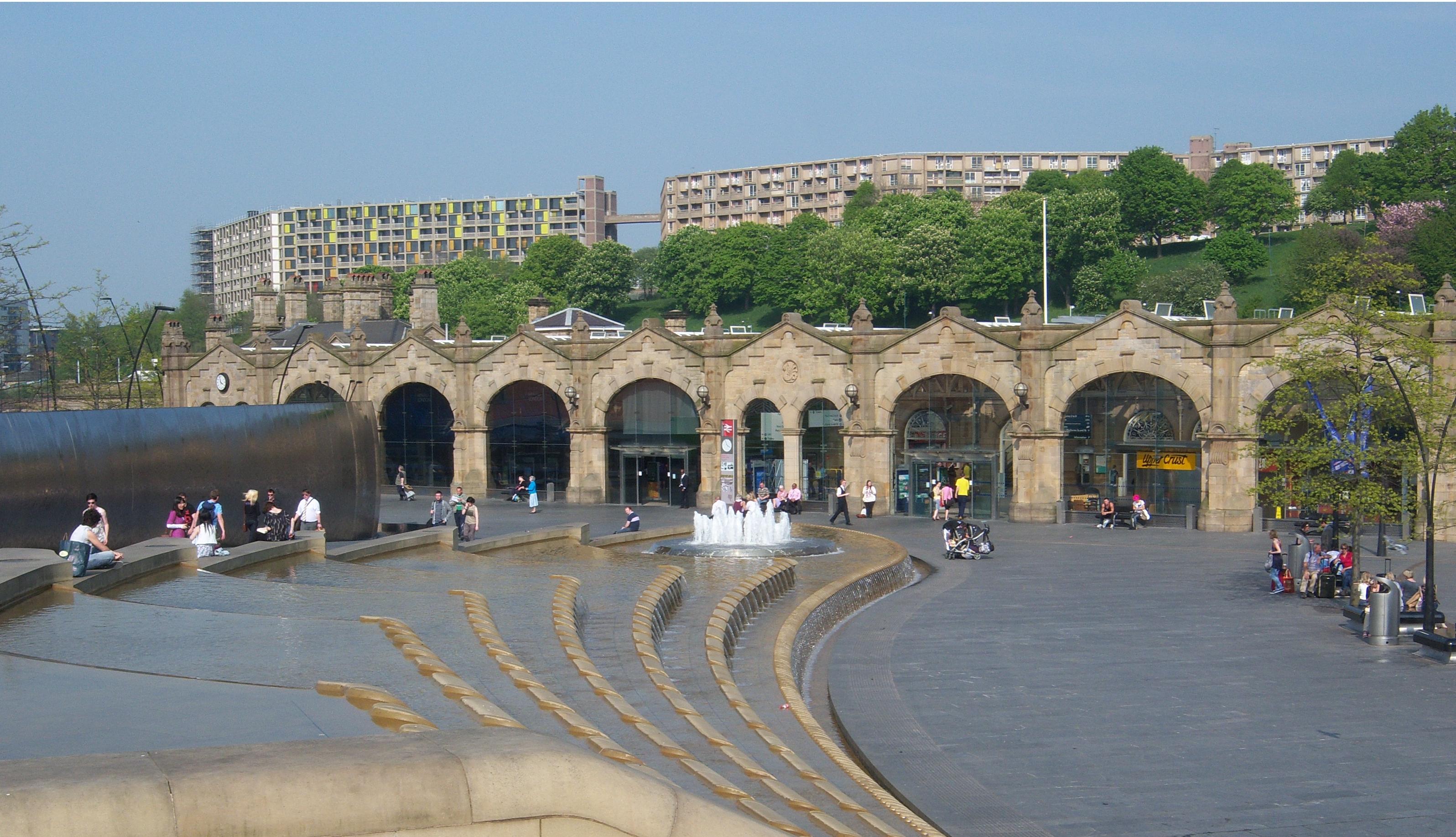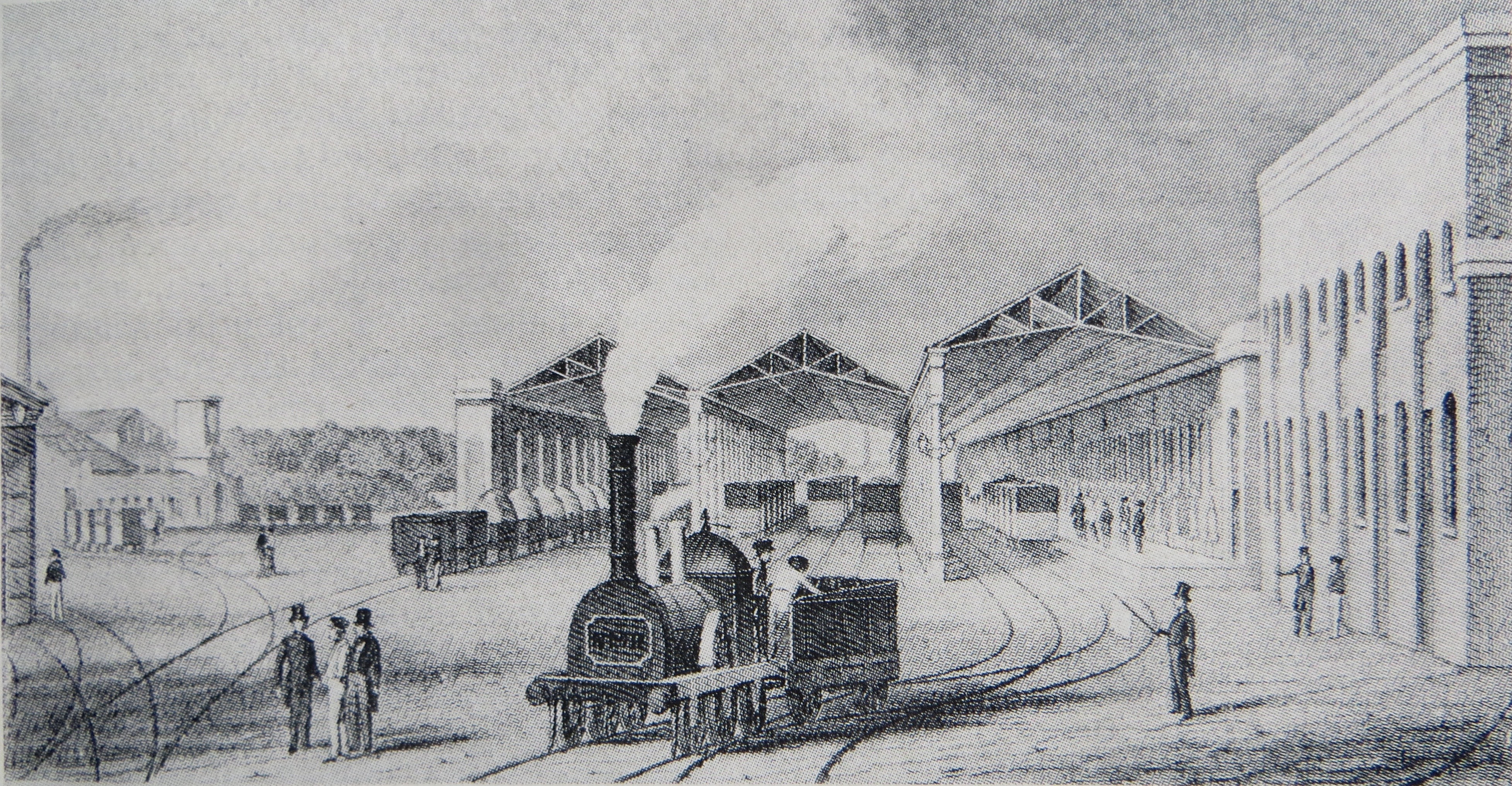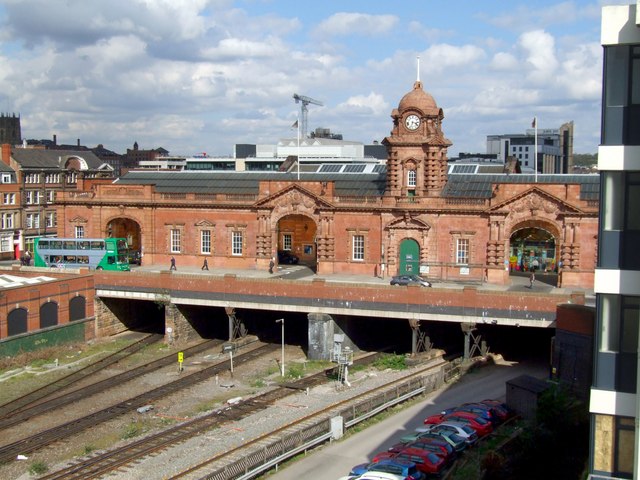|
Redhill Grange
Redhill Grange or (Redhill) is a purpose-built settlement in Wellingborough, Northamptonshire. It is situated just north from the Redwell area in the market town and eleven miles from the county town Northampton, forming part of the district authority of the borough of Wellingborough, now in North Northamptonshire. History Redhill Grange is a small private housing area of just under 400 homes, located approximately a mile and a half north of the centre of Wellingborough. The site is predominantly surrounded by farmed land, although there are also adjacent areas of woodland and hedgerows. The Great Harrowden Brook runs along the southern edge of the side whilst to the east there is an area of farmland followed by the Finedon Road industrial estate. Redhill Grange was slowly developed over the period between the late 1960s and the late 1990s by a number of different developers and properties range from two bedroom semi-detached to five bedroom detached houses However, in 200 ... [...More Info...] [...Related Items...] OR: [Wikipedia] [Google] [Baidu] |
North Northamptonshire
North Northamptonshire is one of two local authority areas in Northamptonshire, England. It is a unitary authority area forming about one half of the ceremonial county of Northamptonshire. It was created in 2021. Its notable towns are Kettering, Corby, Wellingborough, Rushden, Raunds, Desborough, Rothwell, Irthlingborough, Thrapston and Oundle. The council is based at the Corby Cube in Corby. It has a string of lakes along the Nene Valley Conservation Park, associated heritage railway, the village of Fotheringhay which has tombs of the House of York as well as a towering church supported by flying buttresses. This division has a well-preserved medieval castle in private hands next to Corby – Rockingham Castle – and about 20 other notable country houses, many of which have visitor gardens or days. History North Northamptonshire was created on 1 April 2021 by the merger of the four non-metropolitan districts of Corby, East Northamptonshire, Kettering, and Wellingbo ... [...More Info...] [...Related Items...] OR: [Wikipedia] [Google] [Baidu] |
Stagecoach Midlands
Stagecoach Midlands operates most bus routes in Northamptonshire and Warwickshire; the legal name for the company is Midland Red (South) Ltd.The company was previously split into ''Midland Red'' in Warwickshire and ''United Counties Omnibus'' in Northampton; however, the two were merged together under the ''Midland Red'' identity in 2021. In towns, local bus routes are mostly operated under their own branding. These are Connect Kettering, Connect Wellingborough, Corby Star and Daventry Dart, while Northampton has no local name but is part of the Buzz fare scheme. Depots * Corby (Station Road) * Kettering (Northampton Road) * Northampton (Main Road) * Leamington Spa (Station Approach) * Nuneaton (Newtown Road) * Rugby (Railway Terrace) * Stratford-upon-Avon (Avenue Farm) Brands Matrix The Matrix brand was used by Stagecoach Midlands Nuneaton depot for routes 55, 56 and 57 between Coventry, Bedworth and Nuneaton from 2008 until 2015 when the brand was dropped due to the age o ... [...More Info...] [...Related Items...] OR: [Wikipedia] [Google] [Baidu] |
Sheffield Railway Station
Sheffield station, formerly ''Pond Street'' and later ''Sheffield Midland'', is a combined railway station and tram stop in Sheffield, England; it is the busiest station in South Yorkshire. Adjacent is Sheffield station/Sheffield Hallam University Sheffield Supertram stop. In 2017–18, the station was the 43rd-busiest in the UK and the 15th-busiest outside London. History 1870 - 1960 The station was opened in 1870 by the Midland Railway to the designs of the company architect John Holloway Sanders. It was the fifth and last station to be built in Sheffield city centre. The station was built on the 'New Line', which ran between Grimesthorpe Junction, on the former Sheffield and Rotherham Railway, and Tapton Junction, just north of Chesterfield. This line replaced the Midland Railway's previous route, the 'old road', to London, which ran from Sheffield Wicker via Rotherham. The new line and station were built despite some controversy and opposition locally. The Duke of Norf ... [...More Info...] [...Related Items...] OR: [Wikipedia] [Google] [Baidu] |
Derby Railway Station
Derby railway station (, also known as Derby Midland) is a main line railway station serving the city of Derby in Derbyshire, England. Owned by Network Rail and managed by East Midlands Railway, the station is also used by CrossCountry services and two daily Northern services. It lies north of London St Pancras. It is situated to the south-east of Derby city centre, and is close to the west bank of the River Derwent. Overview The decision by the Midland Railway to have its headquarters in Derby made the town a busy node of the rail network. First opened in 1839, it was at the time one of the largest stations in the country, and was unusual for being shared by more than one company. Until its closure in 1990, Derby Railway Works, consisting of major carriage and locomotive workshops, as well as the Research Division in the Railway Technical Centre were housed there. The station is an interchange point between the Midland Main Line from to and long-distance services on the ... [...More Info...] [...Related Items...] OR: [Wikipedia] [Google] [Baidu] |
Nottingham Railway Station
Nottingham station, briefly known as Nottingham City and for rather longer as Nottingham Midland, is a railway station and tram stop in the city of Nottingham. It is the principal railway station of Nottingham. It is also a nodal point on the city's tram system, with a tram stop that was originally called Station Street but is now known as Nottingham Station. The station was first built by the Midland Railway (MR) in 1848 and rebuilt by the same company in 1904, with much of the current building dating from the later date. It is now owned by Network Rail and managed by East Midlands Railway (EMR). Besides EMR trains, it is also served by CrossCountry and Northern trains and by Nottingham Express Transit (NET) trams. The station was one of several that once served the city of Nottingham. Amongst these were the city centre stations of on the Great Central Railway, and on the Great Northern Railway; both of these stations are now closed. A number of minor stations served l ... [...More Info...] [...Related Items...] OR: [Wikipedia] [Google] [Baidu] |
Leicester Railway Station
Leicester railway station (formerly Leicester Campbell Street and Leicester London Road) is a mainline railway station in the city of Leicester in Leicestershire, England. The station is managed by East Midlands Railway and owned by Network Rail. The station is served by CrossCountry and East Midlands Railway services. Leicester station was opened in 1840 by the Midland Counties Railway, and rebuilt in 1894 and 1978. It is on the Midland Main Line, which runs from London St Pancras to Sheffield and Nottingham. It is north of London St Pancras. Background The first station on the site opened on 5 May 1840. It was originally known simply as ''Leicester'', becoming ''Leicester Campbell Street'' on 1 June 1867, and ''Leicester London Road'' from 12 June 1892. This was replaced in 1894 by a new station, also called ''Leicester London Road''. Following the closure of Central on 5 May 1969, this station was renamed ''Leicester''. Besides London Road and Central, the city of Le ... [...More Info...] [...Related Items...] OR: [Wikipedia] [Google] [Baidu] |
Corby Railway Station
Corby railway station, owned by Network Rail and managed by East Midlands Railway, is in Corby, Northamptonshire, England. The current station, opened on 23 February 2009, replaces an earlier one dating from 1879, first closed on 18 April 1966 but reopened between 1987 and 1990. Plans for the current station, opposite the original, were approved in late 2007. It opened with just one daily train each way on Mondays to Fridays. The full current service of hourly trains to and from London began on 27 April 2009, after East Midlands Trains had taken delivery of the additional trains needed for its implementation. History The Midland Railway opened Corby station in 1879. It was on the Nottingham direct line of the Midland Railway between and , serving Corby, and , instead of , and Loughborough. The station was initially named "Weldon and Corby" to avoid confusion with Corby Glen station in Lincolnshire, which closed in 1959. British Railways (BR) withdrew passenger services f ... [...More Info...] [...Related Items...] OR: [Wikipedia] [Google] [Baidu] |
Kettering Railway Station
Kettering railway station serves the town of Kettering in Northamptonshire, England. It lies south-west of the town centre, on the Midland Main Line, north of London St. Pancras. History The station was opened in May 1857 by the Midland Railway, on a line linking the Midland to the Great Northern Railway at Hitchin. Later, the Midland gained its own London terminus at St Pancras railway station. In 1857, the leather trade was in recession and so over half of Kettering's population was on poor relief; the railway enabled the town to sell its products over a much wider area and restored it to prosperity. The original station with a single platform was designed by Charles Henry Driver, with particularly fine 'pierced grill' cast ironwork on the platform. In 1858 it was reported that the station was now lit by gas lamps with gas supplied from the town mains. It was also reported that the line was one of the very few without telegraphic wires. From 1866, the station was als ... [...More Info...] [...Related Items...] OR: [Wikipedia] [Google] [Baidu] |
Luton Railway Station
Luton railway station is located in the town centre of Luton, Bedfordshire, England. The station is about three minutes' walk from The Mall Shopping Centre. It is situated on the Midland Main Line and is operated by Thameslink. History Luton station was built by the Midland Railway in 1868 on its extension to St. Pancras. For some years, it was known as ''Luton Midland Road'' to distinguish it from the earlier '' Luton Bute Street'', which was built in 1858 on the GNR line from Hertford North to Leighton Buzzard. A public area, known as the ''Great Moor'', had to be built through; the remainder of the land was bought for development by John Crawley, who provided a replacement in what is known as the ''People's Park''. This proved a worthwhile investment because, as the town's staple trade in straw hats diminished as they went out of fashion, it was replaced by engineering works. By the beginning of the twentieth century, the population had nearly trebled and the station ha ... [...More Info...] [...Related Items...] OR: [Wikipedia] [Google] [Baidu] |
Bedford Railway Station
Bedford railway station (formerly Bedford Midland Road and historically referred to on some signage as Bedford Midland) is the larger of two railway stations in the town of Bedford in Bedfordshire, England. It is on the Midland Main Line from London St Pancras to the East Midlands and the terminus of the Marston Vale line from Bletchley through Bedford St Johns. History The original station was built by the Midland Railway in 1859 on its line to the Great Northern at Hitchin. It was on land known as "Freemen's Common" approximately south of the current station on Ashburnham Road. The London and North Western Railway (LNWR) also had a station on its line between and . The Midland crossed it on the level and there was a serious collision when an LNWR train passed a red signal. (Curiously, both drivers were named John Perkins). Following this accident, the Midland built a flyover in 1885. The extension to opened in 1868. The connection to ceased public services during ... [...More Info...] [...Related Items...] OR: [Wikipedia] [Google] [Baidu] |
Wellingborough Railway Station
Wellingborough railway station (formerly Wellingborough Midland Road) is a Grade II listed station located in the market town of Wellingborough in Northamptonshire, England. It lies on the Midland Main Line and is from London St. Pancras. The station is operated by East Midlands Railway, which is also the primary operator serving the station with passenger services. As well as Wellingborough itself, the station is also the closest to the towns of Higham Ferrers, Raunds, Irthlingborough and Rushden, although there is no direct public transport link from the station itself to any of these towns apart from Irthlingborough. It is also the nearest station to Rushden Lakes shopping centre. Wellingborough station was used as a filming location for the film '' Kinky Boots'', standing in for Northampton station. In late 2009, Wellingborough was made a Penalty fare station by East Midlands Trains, which means a valid ticket or permit to travel must be shown when requested. History We ... [...More Info...] [...Related Items...] OR: [Wikipedia] [Google] [Baidu] |
St Pancras Railway Station
St Pancras railway station (), also known as London St Pancras or St Pancras International and officially since 2007 as London St Pancras International, is a central London railway terminus on Euston Road in the London Borough of Camden. It is the terminus for Eurostar services from Belgium, France and the Netherlands to London. It provides East Midlands Railway services to , , , and on the Midland Main Line, Southeastern high-speed trains to Kent via and , and Thameslink cross-London services to Bedford, Cambridge, Peterborough, Brighton, Horsham and Gatwick Airport. It stands between the British Library, the Regent's Canal and London King's Cross railway station, with which it shares a London Underground station, . The station was constructed by the Midland Railway (MR), which had an extensive rail network across the Midlands and the North of England, but no dedicated line into London. After rail traffic problems following the 1862 International Exhibition, the MR decid ... [...More Info...] [...Related Items...] OR: [Wikipedia] [Google] [Baidu] |







_railway_station.jpg)